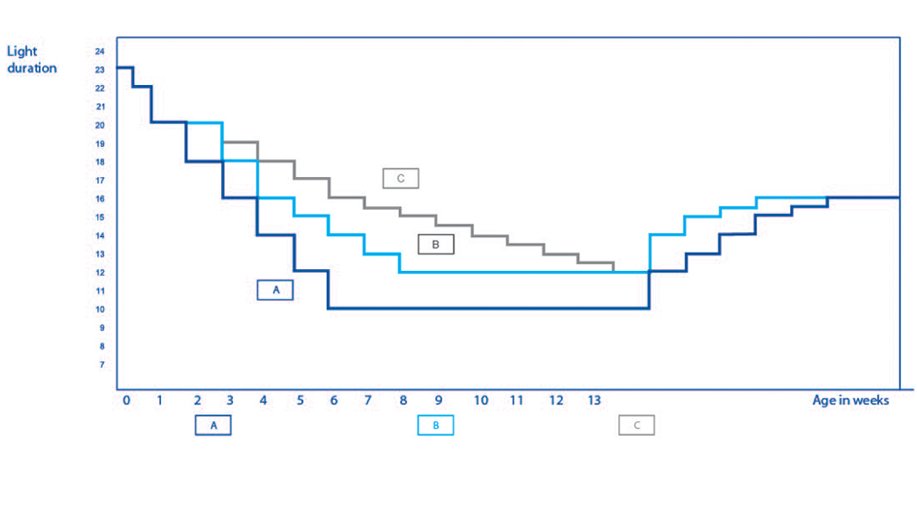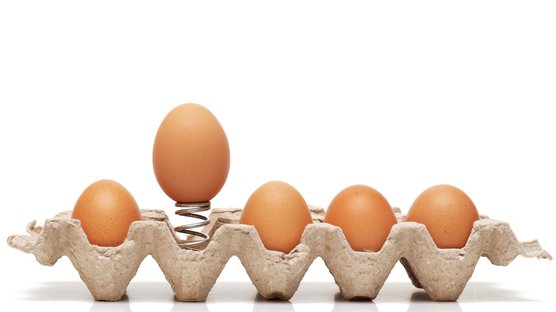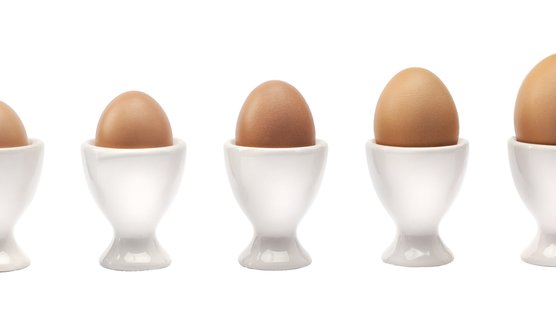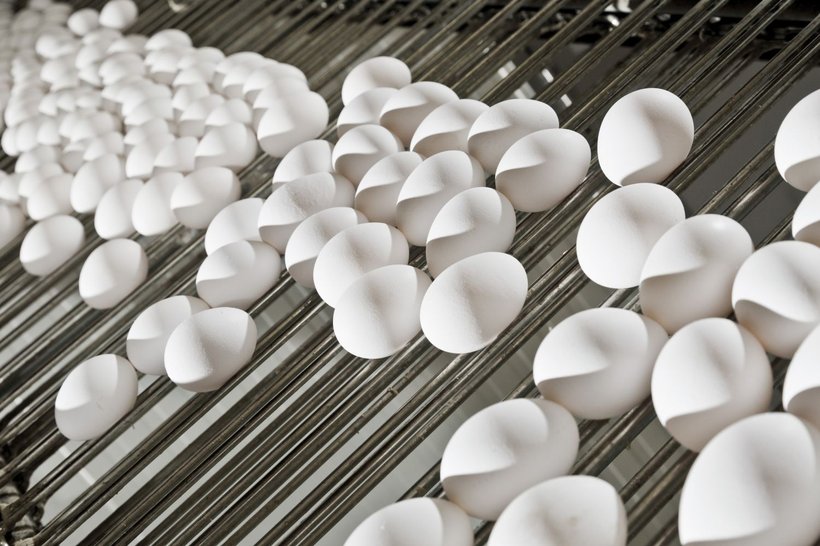
Published on March 1, 2019
Lighting program as a tool to manage sexual maturity and adjust egg size to market requirements
Egg markets are diverse, and one of the priorities for egg producers worldwide is how to optimize the egg size profile in order to obtain the maximum number of eggs of the desired grades to match market needs and maximize profit.
The main aspects affecting egg weight are:
- Genetics: each breed has its own egg weight profile, some of them produce larger eggs while others produce smaller eggs. Choosing the strain with the potential to produce eggs on the range required by the market is therefore a key decision. Other non-genetic factors can have even greater impact in egg size (variations up to 3 g. and beyond).
- Management in rearing: poultry farmers know by their own experience that the rearing period is key for future production performance. The lighting program used in rearing, the moment of light stimulation, and body weight will highly influence egg weight: this means that the right decisions in terms of management should be taken at the start of rearing based on desired average egg weight.
- Nutrition: diet composition will also significantly affect egg weight, basically total fat, linoleic acid and essential amino acids, mainly methionine. The optimal period to influence egg weight by nutrition is up to about 30 weeks of age, later response will be lower.
- Management in lay: using a feed of the suitable particle size and using feeding techniques so that feeders are empty for a short period (1 h – 1 ½ h) in the middle of the day will help to promote uniform daily intake of all nutrients and control body weight and egg size.
Lighting programs used in rearing: general principles
It is well known that hens are sensitive to light and changes in daylength. When hens are reared only under natural light conditions, they reach sexual maturity at different ages depending on latitude and season.
The general aims of a lighting regime during the rearing period are to:
- Control the timing of sexual maturity - this has a major influence on egg weight and egg numbers.
- Stimulate early feed intake and growth – and help to install the suitable feeding techniques
When designing a lighting program, there are some important aspects to take into account:
- Pullets respond more to a change in daylength than to the daylength itself.
- Pullets do not respond to an increase in daylength until about 6 weeks of age.
- Pullets become more responsive to decreases in daylength as they approach natural sexual maturity.
The basic rule is that pullets should never experience an increase in daylength until the moment of the scheduled light stimulation and never experience a decrease in daylength during the laying period. Based on this rule, all lighting programs consist of three different phases:
- 1st phase: decreasing daylength
- 2nd phase: constant daylength
- 3rd phase: light stimulation
Long light duration is essential during the first weeks of age to encourage feed intake and early growth. Depending on the speed of reduction of daylength during the first phase, sexual maturity will be affected, and consequently, egg numbers and egg size. Slow step-down lighting programs will delay sexual maturity and, in addition to that, give more chance for the birds to eat, so reaching body weight targets on the upper part of the standard range is easier. Both factors, late sexual maturity and higher body weight, lead to an increased egg size. On the contrary, fast step-down lighting programs promote earlier sexual maturity, which is linked to smaller egg size. Total egg mass will not be significantly be affected by reasonable variations in sexual maturity: earlier flocks will lay a few more eggs but of smaller size, while late flocks will lay a few less eggs but larger in size.
Phase of constant daylength, usually in a range between 8 h to 12 h, can also be adjusted to farm conditions. In hot climates, or when reaching the target body weight is difficult, it is always preferred to keep a longer “plateau” in order to help pullets to eat and grow. This also allows time to manage the empty feeder technique once per day for development of feed intake capacity.
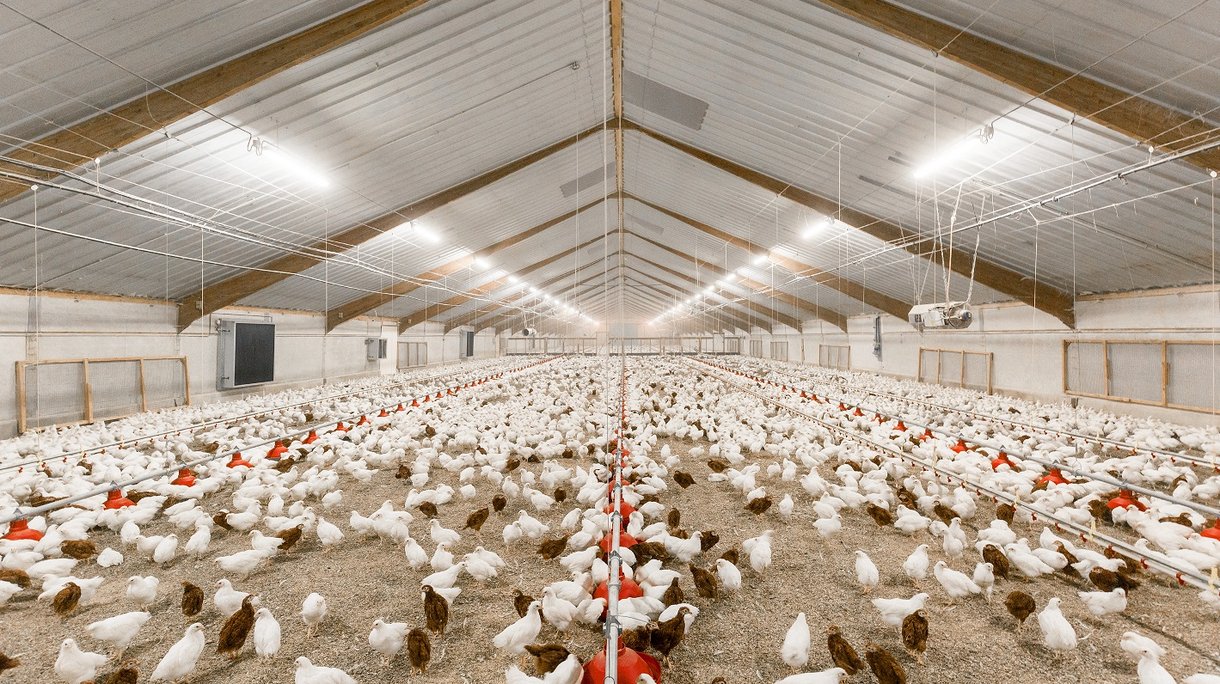
Light stimulation
Light stimulation will also determine the onset of lay and average egg weight, depending on:
- Age at light stimulation
- Body weight
- Size and speed of increments in daylength
Light stimulation should be done based on body weight and uniformity. Heavier pullets will lay larger eggs, while lighter pullets will lay smaller eggs., If pullets that are too light in weight are stimulated, there is an increased risk of higher mortality due to prolapse and vent pecking, poorer laying persistency and eggshell quality problems. Uniformity is of utmost importance: a minimum of 80% uniformity is required for secure light stimulation.
Increase of daylength should not be too slow. In addition to the triggering effect on hormonal changes necessary for sexual maturation, when daylength is extended, there is also an increase in feeding opportunity with positive effect in bodyweight and, as a consequence, in a more rapid increase in early egg weight. An abrupt increase in daylength (more than 2 hours step) should be avoided as excessive light stimulation is a stress factor linked to nervousness, higher mortality and increased incidence of eggshell defects at onset of lay. This situation can be specially challenging when pullets are reared in dark houses and later transferred to open-sided production houses: in these conditions, the lighting program in rearing should take into account the natural daylength at the age of transfer.
Ideally, rearing houses should be light-proof, so the most suitable lighting program for every production target (larger or smaller eggs) could be used. In open-sided rearing houses it is really not easy to counteract the effect of daylength seasonal variations, depending on the latitude. Lighting programs can be adjusted by adding artificial light when birds are reared in increased daylength to set a constant plateau. This plateau is set according to the maximum natural light the pullets will experience during the rearing period, avoiding too early onset of lay. Control of sexual maturity in these conditions is difficult to achieve.
With the correct lighting program in place, egg producers will be able to control and manage the egg size profile according to the market needs.
